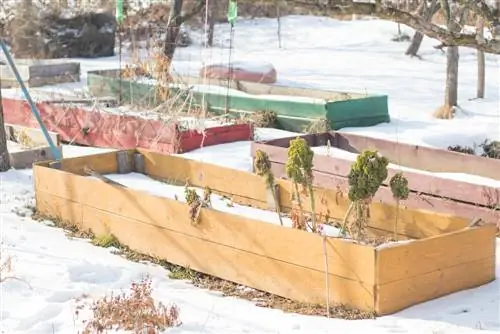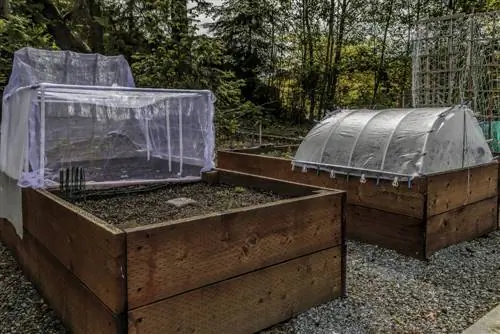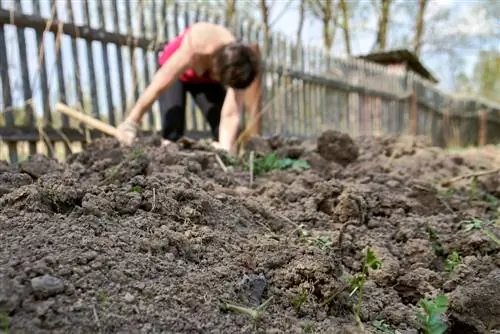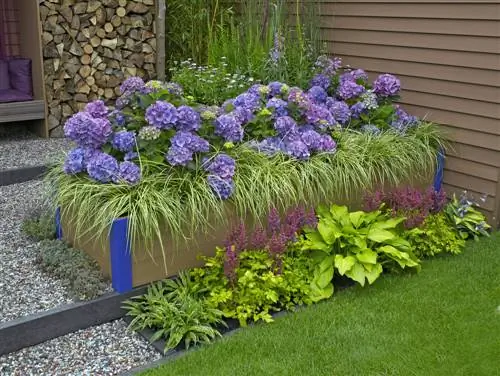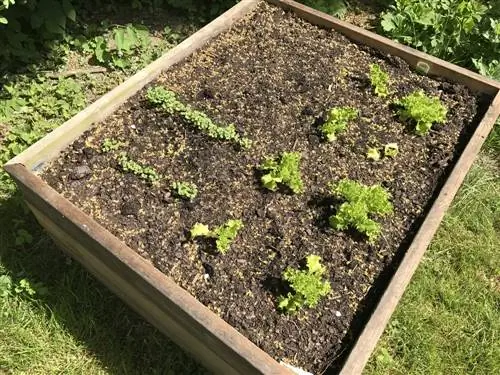- Author admin [email protected].
- Public 2023-12-16 16:46.
- Last modified 2025-06-01 06:02.
Winter is a time of rest for nature - and in the garden. The raised bed can also be covered during the cold season - or planted with winter vegetables such as leeks, sprouted broccoli and parsnips. This is possible due to the heat development within a classic layered raised bed.
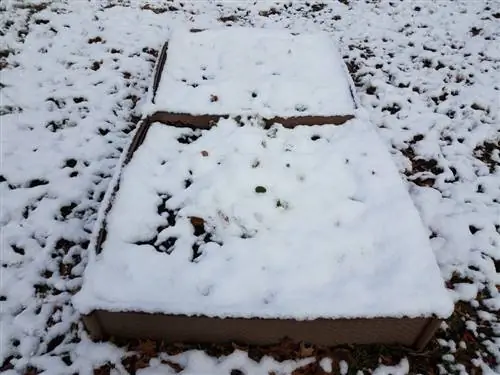
How should you cover a raised bed in winter?
Covering a raised bed in winter makes sense to protect nutrients. Cover harvested beds with half-ripened compost or dark foil. Perennial, cold-sensitive plants should be covered with light-colored fleece or brushwood. A polytunnel can be used for winter crops such as sprouted broccoli or leeks.
Cover harvested raised bed with compost
If you only grow annual vegetable crops on your raised bed, no special winter protection is necessary. As soon as the last plants have been harvested, apply a light mulch of half-ripened compost and then let the bed go into winter rest. Open areas of ground between fruit trees also receive such protection. Alternatively, you can also cover the bed with dark foil. This measure makes sense, otherwise the winter precipitation will wash valuable nutrients out of the bed.
Winter protection for perennial plants in raised beds
Perennial, cold-sensitive plants such as herbs, ornamental plants or fruit trees should be covered completely with light-colored fleece or brushwood. Plants that are not completely winter-proof, such as rosemary or artichokes, are better off digging up and overwintering frost-free in the house, cellar or greenhouse.
Raised bed gardening in winter: What grows in the cold season?
But you don't have to miss out on gardening in raised beds in winter: almost winter-hardy crops such as winter spinach can be easily cultivated under the polytunnel. Sprout broccoli, leeks and parsnips are also resistant to cold and frost. However, if you have a winter crop, make sure that the bed is completely harvested by February - then you have to gradually prepare it for the new season.
How to integrate a polytunnel in the raised bed
Cold frames or greenhouse attachments for raised beds have proven successful for growing vegetables during the cold season. The simplest variant, however, is a simple polytunnel. To do this, insert several curved metal, wooden or plastic rods into the ground about 40 centimeters apart so that they span the narrow side. In a wooden raised bed, you can also attach eyelets to the inner sides and insert the rods there for fastening. Simply pull the white foil over the rods and attach it to the side using stones, for example.
Tip
If you order the raised bed in winter, cover it with white fleece if snow is imminent. This makes harvesting easier later because you can simply lift off the fleece along with the snow - and don't have to dig for your vegetables.


